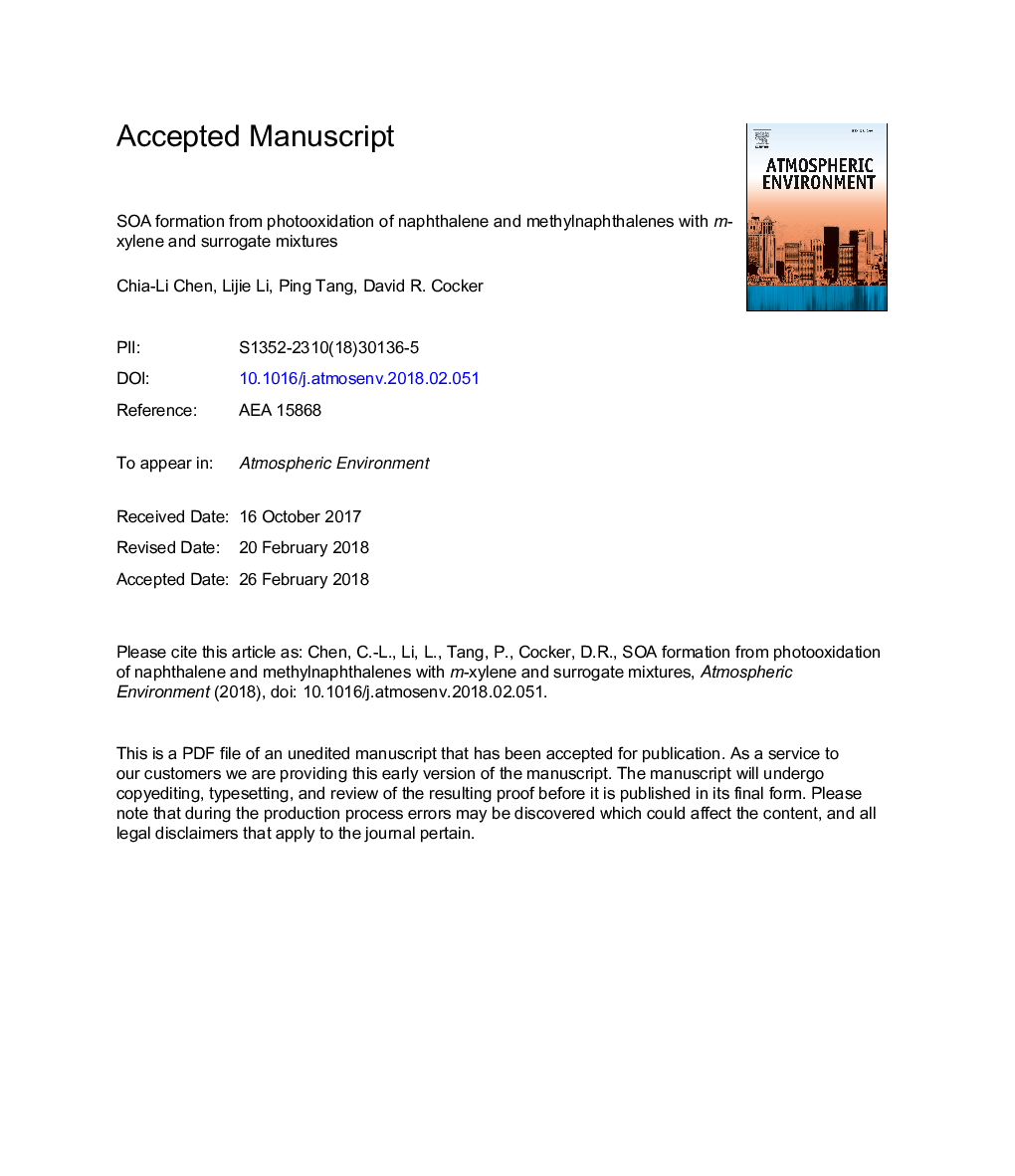| Article ID | Journal | Published Year | Pages | File Type |
|---|---|---|---|---|
| 8863995 | Atmospheric Environment | 2018 | 27 Pages |
Abstract
SOA formation is not well predicted in current models in urban area. The interaction among multiple anthropogenic volatile organic compounds is essential for the SOA formation in the complex urban atmosphere. Secondary organic aerosol (SOA) from the photooxidation of naphthalene, 1-methylnaphthalene, and 2-methylnaphthalene as well as individual polycyclic aromatic hydrocarbons (PAHs) mixed with m-xylene or an atmospheric surrogate mixture was explored in the UCR CE-CERT environmental chamber under urban relevant low NOx and extremely low NOx (H2O2) conditions. Addition of m-xylene suppressed SOA formation from the individual PAH precursor. A similar suppression effect on SOA formation was observed during the surrogate mixture photooxidation suggesting the importance of gas-phase chemical reactivity to SOA formation. The SOA growth rate for different PAH-m-xylene mixtures was strongly correlated with initial [HO2]/[RO2] ratio but negatively correlated with initial m-xylene/NO ratio. Decreasing SOA formation was observed for increasing m-xylene/PAHs ratios and increasing initial m-xylene/NO ratio. The SOA chemical composition characteristics such as f44 versus f43, H/C ratio, O/C ratio, and the oxidation state of the carbon OS¯c were consistent with a continuously aging with the SOA exhibiting characteristics of both individual precursors. SOA formation from PAHs was also suppressed within an atmospheric surrogate mixture compared to the SOA formed from individual PAHs, indicating that atmospheric reactivity directly influences SOA formation from PAHs.
Related Topics
Physical Sciences and Engineering
Earth and Planetary Sciences
Atmospheric Science
Authors
Chia-Li Chen, Lijie Li, Ping Tang, David R. III,
